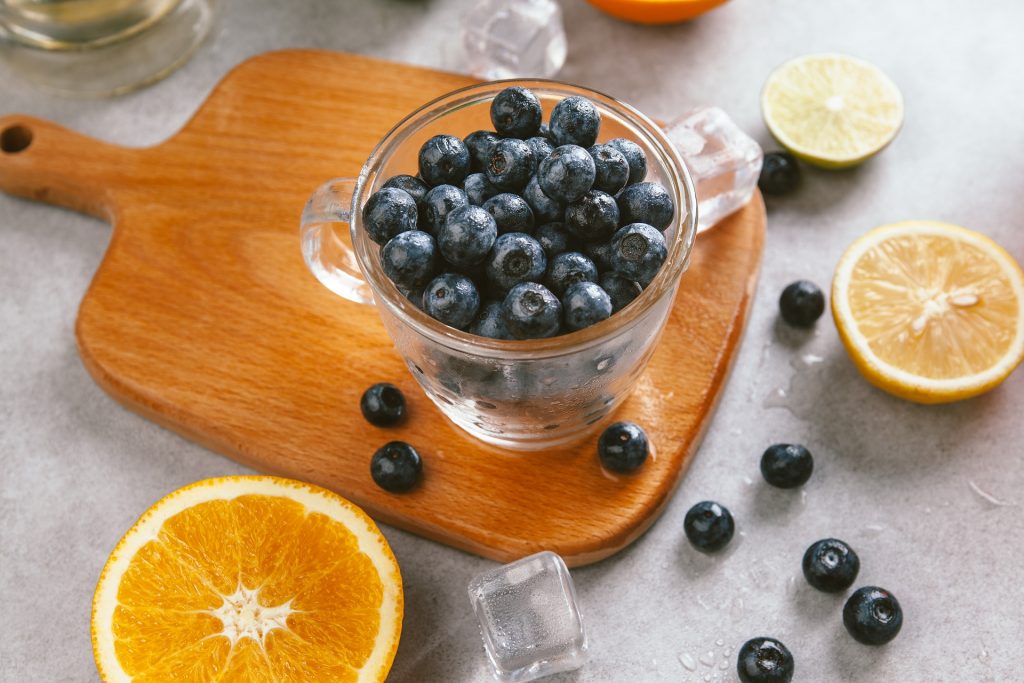 Flavonoids are a group of phytochemicals that belong to the polyphenol group. Flavonoids are present in a wide number of plant foods, particularly fruit, vegetables, herbs and spices. A number of studies have suggested that there is a modest protective effect for flavonoids against cardiovascular disease. For example, in one study researchers investigated the association between the intakes of anthocyanins and flavanones with cardiovascular disease in a population of health professionals living in the United States. The subjects were followed for 24 years and during this time the dietary intake of anthocyanins and flavanones and the number of deaths from cardiovascular disease were recorded. The results of the study showed that those individuals with the highest intake of anthocyanins had the lowest risk of a non-fatal myocardial infarction, and those individuals with the highest intake of flavanones had the lowest risk of ischaemic stroke. This data supports other studies that have found cardioprotective effects for flavonoids.
Flavonoids are a group of phytochemicals that belong to the polyphenol group. Flavonoids are present in a wide number of plant foods, particularly fruit, vegetables, herbs and spices. A number of studies have suggested that there is a modest protective effect for flavonoids against cardiovascular disease. For example, in one study researchers investigated the association between the intakes of anthocyanins and flavanones with cardiovascular disease in a population of health professionals living in the United States. The subjects were followed for 24 years and during this time the dietary intake of anthocyanins and flavanones and the number of deaths from cardiovascular disease were recorded. The results of the study showed that those individuals with the highest intake of anthocyanins had the lowest risk of a non-fatal myocardial infarction, and those individuals with the highest intake of flavanones had the lowest risk of ischaemic stroke. This data supports other studies that have found cardioprotective effects for flavonoids.

Flavonoids are a group of polyphenolic phytochemicals found in plants. They are termed polyphenolic because they possess a structure that contains multiple phenol rings. This structure confers antioxidant activity on them. The ability of flavonoids to act as antioxidants suggests that they may have beneficial physiological effects. And there appears to be evidence that this is indeed the case. For example, those with the highest intake of flavonoids in their diets have the lower risk of certain Western lifestyle diseases, particularly cardiovascular disease. However, there are other beneficial nutrients in the foods that contain flavonoids, and so care should be taken when interpreting associations. It could be for example that fibre in the plant foods containing the flavonoids is the protective agent in fruits and vegetables. Because these associations are complex, the best advice is to eat a range of fruits and vegetables in order to consume the largest number of possibly protective plant compounds. Certainly plant based diets appear to show excellent health promoting effects regardless of the actual physiological mechanisms of individual components.
It is interesting that the different groups of flavonoids were associated with different cardioprotective effects. This may relate to the unique chemistry of the flavonoids and may suggest that individual groups of flavonoid may have differing physiological effects in humans. Certainly there is some evidence that this is the case, with quite different absorption, metabolism and excretion kinetics between different flavonoid groups. However, it may also suggest that the different foods that contain the flavonoids can have differing protective effects. Anthocyanins are found in high concentrations in berries, whereas flavanones are found in high concentrations in citrus fruit. The differing protective profiles between anthocyanins and flavanones may therefore reflect the differing dietary intakes of the individuals within the study, rather than just the individual protective effects of the anthocyanins and flavanones in isolation.recommendations are to eat a wide range of different flavonoid containing fruits and vegetables.
Eat Well, Stay Healthy, Protect Yourself
RdB
